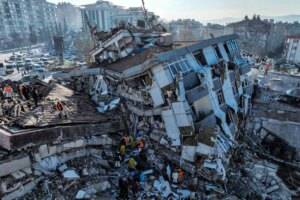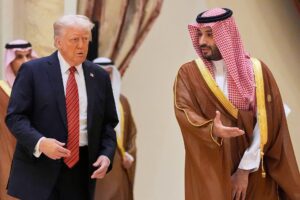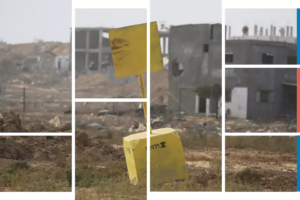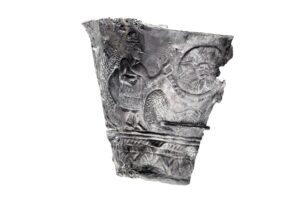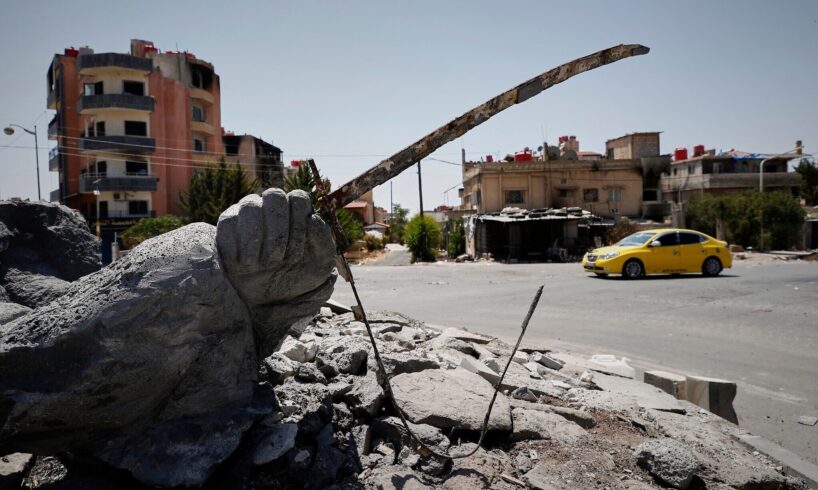
DAMASCUS, Syria (AP) — A new round of clashes between Druze armed groups and government forces in the province of Sweida in southern Syria had subsided Friday but left fears of another escalation.
Clashes on Thursday led to both sides blaming each other for violating a ceasefire that ended several days of violent fighting in July. There were reports of people wounded on both sides, but no deaths were reported.
The National Guard, the de facto military in Sweida, accused Syrian government forces of launching an attack on the town of al-Majdal Thursday, “employing heavy and medium weapons and attack drones, in an aggressive attempt to breach our defense lines and target vital locations.”
“Our forces bravely and with high combat efficiency repelled this attack, inflicting heavy losses on the attacking forces in terms of equipment and personnel,” it said in a statement.
The government in Damascus accused the Sweida factions of violating the ceasefire first.
Get The Times of Israel’s Daily Edition
by email and never miss our top stories
By signing up, you agree to the terms
Mustafa al-Bakour, the Damascus-appointed governor of Sweida province, said “some factions and the so-called National Guard” launched “attacks on de-escalation points.” The attacks, he added, “constitute a clear violation of international agreements and obstruct efforts to rebuild and prepare for the return of residents to their villages.”
Renewed clashes ERUPT in Syria’s As-Suwayda between the Syrian government forces & local #Druze factions — local media.
Reports indicate that the clashes are still ONGOING, accompanied by drones & mortar attacks targeting the frontlines#Sweida_Suwayda #Syria
????@suwayda24 pic.twitter.com/TbETaQ2YiE
— ⚡️???? World News ????⚡️ (@ferozwala) November 14, 2025
Saber Abou Ras, a political analyst who lives in Sweida city, said Thursday’s clashes “were very intense and violent” and included attacks with drones, anti-aircraft machine guns and mortar shells.
He said Israeli warplanes could be heard over the city of Sweida, but it was not clear if they launched any strikes. The IDF has not confirmed flying planes over Sweida on Thursday.
Abou Ras said he believes the Syrian government forces had launched “a retaliatory attack” after the police chief of the local governmental body in Sweida — along with a “large group of officers” — took over a checkpoint formerly controlled by Syrian government security forces in the northern countryside of the province.
On Thursday, Syrian Foreign Minister Asaad al-Shaibani, speaking at an event held by the Chatham House international affairs think tank during a visit to London, said there had been “mistakes made by all sides” in Sweida.
“There are many problems, but we are not dealing with them as if we are the other party,” he said. “We are dealing with this as a Syrian wound, and there is an internal problem within the same house.”
Syria’s interim President Ahmed al-Sharaa (R) signs the country’s constitutional declaration, which will be enforced throughout a five-year transitional period, as interim Foreign Minister Asaad al-Shaibani looks on, at the presidential palace in Damascus on March 13, 2025. (Bakr ALKASEM / AFP)
Sweida was the site of violent clashes in July that began as fighting between Druze groups and local Bedouin tribes after a series of tit-for-tat kidnappings.
The violence escalated after government security forces intervened, ostensibly to break up the fighting, but ended up siding with the Bedouins. Hundreds of civilians, mostly Druze, were killed, many by government fighters.
Israel, home to some 150,000 Druze, intervened on the side of the Syrian Druze, launching strikes on Syrian government forces and on the defense ministry building in central Damascus. A US-brokered ceasefire led to Syrian government forces withdrawing from Sweida.
Since then, Druze groups have set up a de facto military and governmental body in Sweida, similar to the Kurdish-led authorities in the country’s northeast, and have largely refused to deal with the government in Damascus.
Tens of thousands of people remain displaced after the July fighting, including Druze internally displaced within Sweida province and Bedouins who were evacuated from the province to other areas.
Times of Israel staff contributed to this report.
Watch DocuNation Season 3: The Heart of Israel
when you join the ToI Community
Support The Times of Israel’s independent journalism and receive access to our documentary series, DocuNation: The Heart of Israel.
In this season of DocuNation, you can stream seven outstanding Israeli documentaries with English subtitles and then join a live online discussion with the filmmakers. The selected films show Israel beyond the conflict: a place of storytellers and musicians, of dreamers, makers, and communities rooted in meaning and trust.
When you watch DocuNation, you’re also supporting Israeli creators at a time when it’s increasingly difficult for them to share their work globally.
To learn more about DocuNation: The Heart of Israel, click here.
Support ToI and get DocuNation
Support ToI and get DocuNation
Already a member? Sign in to stop seeing this
You appreciate our journalism
You clearly find our careful reporting valuable, in a time when facts are often distorted and news coverage often lacks context.
Your support is essential to continue our work. We want to continue delivering the professional journalism you value, even as the demands on our newsroom have grown dramatically since October 7.
So today, please consider joining our reader support group, The Times of Israel Community. For as little as $6 a month you’ll become our partners while enjoying The Times of Israel AD-FREE, as well as accessing exclusive content available only to Times of Israel Community members.
Thank you,
David Horovitz, Founding Editor of The Times of Israel
Join Our Community
Join Our Community
Already a member? Sign in to stop seeing this
Source


